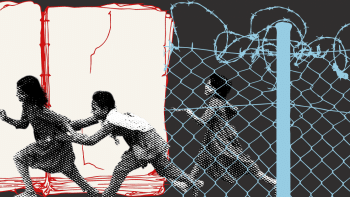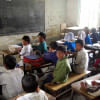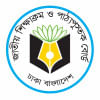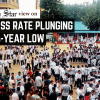Protecting a generation in danger

Education Watch and others have been sounding the alarm bell about the learning loss from disrupted schooling for two academic years due to the pandemic. They have been urging remedial actions. The decision-makers have been in denial about the losses and have been bent on returning to normal school routine. Two recent studies under government auspices have confirmed the warnings given by Education Watch.
A study, designed by the National Curriculum and Textbook Board (NCTB) with European Union support and conducted on 3,000 primary schools and 20,000 students of classes 2 to 5 was completed in October, 2022. Its findings apparently have caused the authorities to be hesitant about releasing the report. However, Daily Janakantha revealed the findings in its cover story on March 21 under the heading, "Corona impact on education – Children in distress." The study found many class 2 students did not recognise the alphabet, and class four students could not do simple addition or subtraction. The situation was worse for disadvantaged groups, such as the ethnic minorities in the hills.
Another survey conducted by the Bangladesh Bureau of Statistics (BBS) with Unicef support under the title, "National Survey on Children's Education in Bangladesh 2021", carried out in 9,000 households was officially released on March 16. The survey was conducted between December 21, 2021 and January 10, 2022. The aim was to investigate school attendance, dropout, engagement in learning activities and other effects of the pandemic as schools re-opened after the long closure.
This study, following the methodology of Multiple Indicators Cluster Survey (MICS) used for survey of children by Unicef and BBS, found that among children aged 7-14 years, about half could correctly answer simple comprehension questions after reading a simple story, thus demonstrating overall foundational reading skills. Foundational numeracy skills among children aged 7-14 years were acquired by a quarter of students (25.8 percent) who could read numbers, understand smaller and larger values and do simple addition. This study provided a snapshot after schools reopened in late 2021, rather than an estimate of loss.
It showed that only about one in five (18.7 percent) school-going children (regardless of education level) attended online or other distance mode learning during the school closure. The primary level participation rate (13.1 percent) was lower compared to lower and upper secondary levels (20.3 and 23.7 percent, respectively).
The adjusted attendance ratio in primary school was reported to be high (80.5 percent) when schools reopened, but considerably less in lower and upper secondary school (59.6 percent and 50.5 percent, respectively). The corresponding pre-Covid attendance ratios three years earlier were higher at primary level (85.9 percent) but were comparable at lower secondary (57.8 percent) and upper secondary levels (48.1 percent).
The Education Watch study concluded that at least one-third of the class eight and nine students were not able to cope with their lessons in the classes they were placed in the post-Covid period.
The NCTB study mentioned above attempted to compare students' learning outcome in 2022 with a pre-Covid assessment undertaken by NCTB in 2019. For example, class four students were tested on their knowledge in class three curricular content in 2019 and 2022. The results were not satisfactory in 2019 – a large proportion of students (40 percent in Bangla, 37 percent in English and 44 percent in Mathematics) showed "severe" lag in 2019 compared to expected grade-level knowledge and skills. The post-Covid results in 2022 were even less satisfactory – "severe" lags for class four students were found for 44 percent in Bangla, 49 percent in English, and 39 percent in mathematics. The relatively better math outcome for class four was an exception, because for other classes, according to the findings, post-Covid results were uniformly worse. The point to be noted is that pre-Covid results with around 40 percent students not achieving essential competencies were not acceptable; but the post-Covid outcomes were worse.
A third study, Education Watch 2022 report (EW22), titled, "Post- Pandemic Education: Recovery and Renewal of School Education," again supported by the European Union, now being finalised and to be released shortly, also provides a snapshot of the school operations and outcomes in the last quarter of 2022. It, among other things, undertook an assessment of knowledge and competency of a sample of class eight and nine students, testing them on expected outcomes in Bangla, English and Mathematics based on class eight curriculum. The findings are largely similar to the NCTB study findings at the primary level.
The Education Watch study concluded that at least one-third of the class eight and nine students were not able to cope with their lessons in the classes they were placed in the post-Covid period. The premise that students should be promoted to the higher classes without letting them lose any school year due to the pandemic disruption or the assumption that somehow students would manage at their class level were not well-founded. Class nine students, tested on class eight materials, did not do much better than class eight students, suggesting a cumulative deficit in learning.
The key recommendation of EW22 is that bringing students up to grade level within a year should be the priority. It urges that grade-wise and school-based recovery plan should be initiated. To assist students and teachers to cope with the new grade level lessons and to avoid cumulative deficits and widening learning gaps, EW22 recommends the following steps:
- A grade-wise rapid assessment of student status in core skills/competencies (Bangla and math at the primary level; and Bangla, English, math and science at the secondary level) should be undertaken.
- Students should be grouped by performance level determined by the rapid assessment and assisted to bring them up to a minimum grade level competency within a year.
- Simple assessment tools should be developed to be used in each school as well as teaching guides and content for remedial lessons by groups.
- Supporting teachers and schools to carry out the assessment and remedial learning activities.
- Teachers should be provided in print and on-line with simple and well-structured pedagogy tools for lessons to serve different ability groups.
The final draft of the NCTB-sponsored study also recommends a recovery and remedial action plan to be jointly formulated by the Directorate of Primary Education, Ministry of Primary and Mass Education and NCTB for primary education. It should include elements, such as priority to foundational skills, extending learning hours, preparing grade and subject-specific remedial packages, recruiting local volunteer teachers and para-teachers to assist classroom teachers, and working with parents and community.
It would be logical to consider similar steps also for the secondary level. Given the convergence of views of researchers and stakeholders, will the decision-makers now listen?
Dr Manzoor Ahmed is professor emeritus at Brac University, chair of Bangladesh ECD Network (BEN), and vice-chair of Campaign for Popular Education (CAMPE). The views expressed are his own.

 For all latest news, follow The Daily Star's Google News channel.
For all latest news, follow The Daily Star's Google News channel. 










Comments